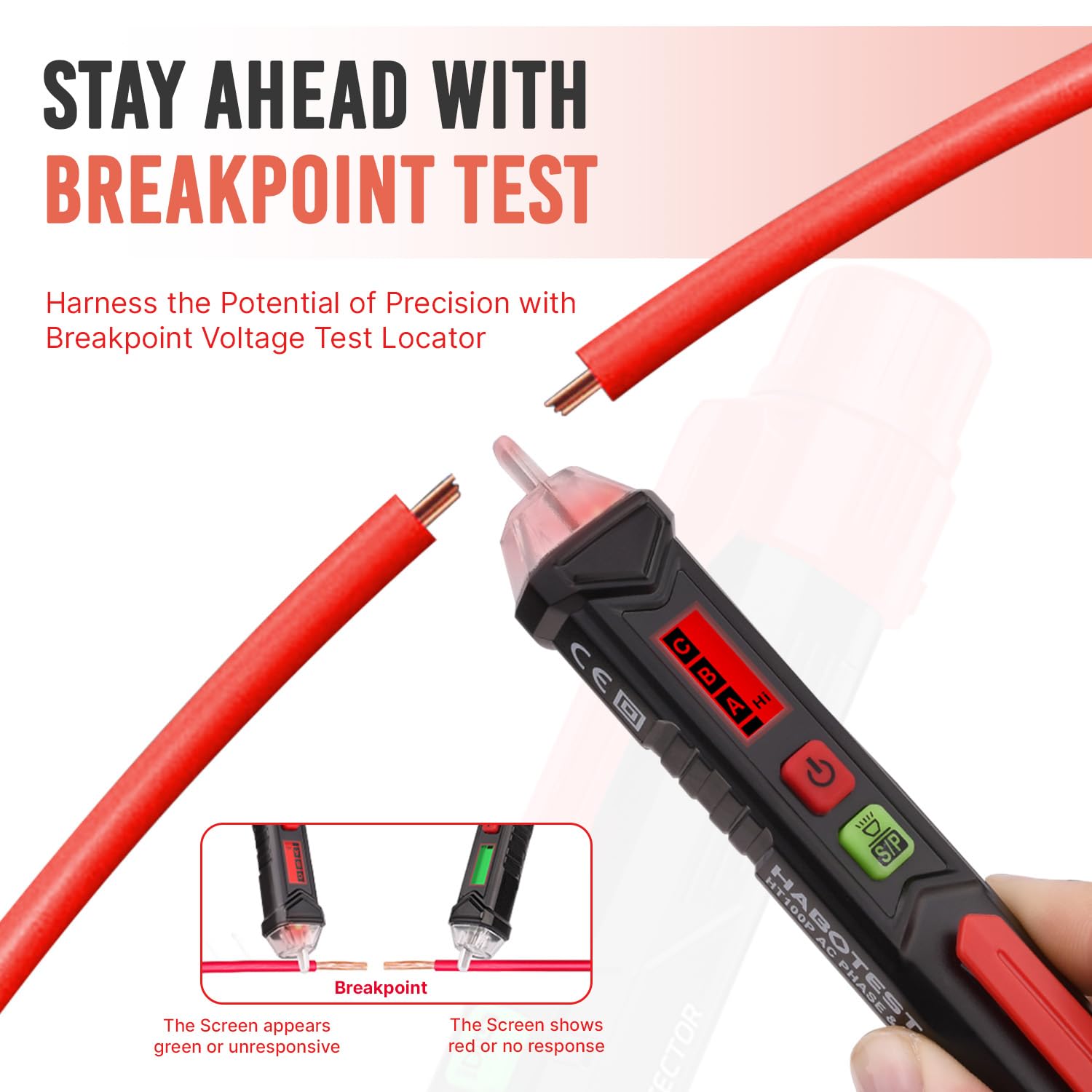A non-contact voltage tester is an essential electrical tool, known by various names like Voltage tester, tick-tracer, or glow-tip. It detects voltage by sensing a small current capacitively coupled from the live circuit, lighting up without direct contact. In electrical work, where safety is crucial, it’s a game-changing device.
A non-contact voltage tester or detector is an electrical tester that helps to detect the presence of voltage. It is known by many names like Voltage tester, tick-tracer, glow-tip, non-contact voltage tester. Non-contact voltage testers work by sensing a very small amount of current that is capacitively coupled from the live circuit to the tester and back to ground. Non-contact voltage testers light up when they detect this current without needing to make direct contact. In the world of electrical work where safety is paramount. A non-contact voltage tester is truly a game changer.
Understanding Non-Contact Voltage Testers:
Non-contact voltage testers, also known as voltage detectors or voltage pens, are portable handheld devices used to detect the presence of alternating current (AC) voltage in electrical circuits without the need for physical contact. They typically consist of a probe or sensor at one end and a handle with an indicator light or alarm system at the other.
How Non-Contact Voltage Testers Really Work :
Non-contact voltage testers, such as the Rack-A-Tiers Ultimate AC Sensor, are designed to detect the presence of voltage without requiring direct contact with conductive material. Unlike traditional multi-meters, which necessitate physical contact, these testers offer convenience and safety by operating at a distance. They typically incorporate both visual and auditory indicators to signal the presence or absence of voltage.
When voltage is absent, the tester usually remains inactive or emits a non-continuous light, indicating a safe environment. In contrast, the presence of voltage triggers a response, often represented by a red light accompanied by a continuous audible tone. These testers typically cover a voltage detection range from 50 to 1000 volts, making them versatile tools for electricians and technicians.
Non-contact voltage testers operate on the principle of capacitive coupling. This involves the interaction between two capacitors: one formed by the object under test, the air within the tester, and the test sensor; and the other comprising the user, any intervening insulation, and the ground. Voltage, if present, induces a potential difference across these capacitors, triggering the detection mechanism and signaling the presence of voltage.
Understanding this capacitive coupling principle is essential for electricians, providing insight into how these testers function and enabling them to make informed decisions about electrical safety.

Why Use a Non-Contact Voltage Tester?
A non-contact test feature with its NCV inductive probe, providing a safe and effortless method for detecting AC voltage. By simply placing the tip near terminals, outlets, or cords, voltage can be detected instantly, ensuring efficient troubleshooting and electrical safety.
Designed for convenience, this voltage detector tester incorporates practical features such as an LED flashlight, low power indicator, and auto power off function. Its compact size and pen hook make it easily portable, fitting into a shirt pocket for convenient access during electrical inspections or repairs.
Equipped with a voltage alarm system, the wire detector signals with red and rapid beeps to indicate high voltage or proximity to live wires. Additionally, an orange light with slow beeps alerts users to low voltage, neutral wire proximity, or distant voltage sources, enhancing safety and preventing potential hazards.
The inclusion of an analog bar display further enhances the functionality of this circuit tester, providing users with an estimation of the voltage level. This feature allows for a quick assessment of the potential severity of the voltage hazard, enabling informed decision-making during electrical work.
With its Cat III 1000V/Cat IV 600V rating, the ULTRICS electrical tester prioritizes user safety when working with electrical systems or circuits. This high safety rating ensures double insulation, providing an enhanced level of protection against electrical shocks and hazards, making it a reliable tool for professionals and DIY enthusiasts alike.

Conclusion:
Non-contact voltage testers represent a paradigm shift in electrical safety and efficiency, offering a seamless blend of innovation and practicality. By comprehending their operational dynamics and adhering to safety protocols, users can embark on electrical endeavors with confidence and peace of mind. Whether you’re a seasoned professional or a DIY enthusiast, integrating a non-contact voltage tester into your toolkit is not just a choice – it’s a commitment to safety and excellence in electrical work.
Frequently Asked Questions
Use the ULTRICS non-contact voltage tester if you need a quality tool for general voltage detection and prefer a tool with on/off capabilities.
Non-contact voltage testers work by sensing a very small amount of current that is capacitively coupled from the live circuit to the tester and back to ground. Non-contact voltage testers light up when they detect this current without needing to make direct contact.

